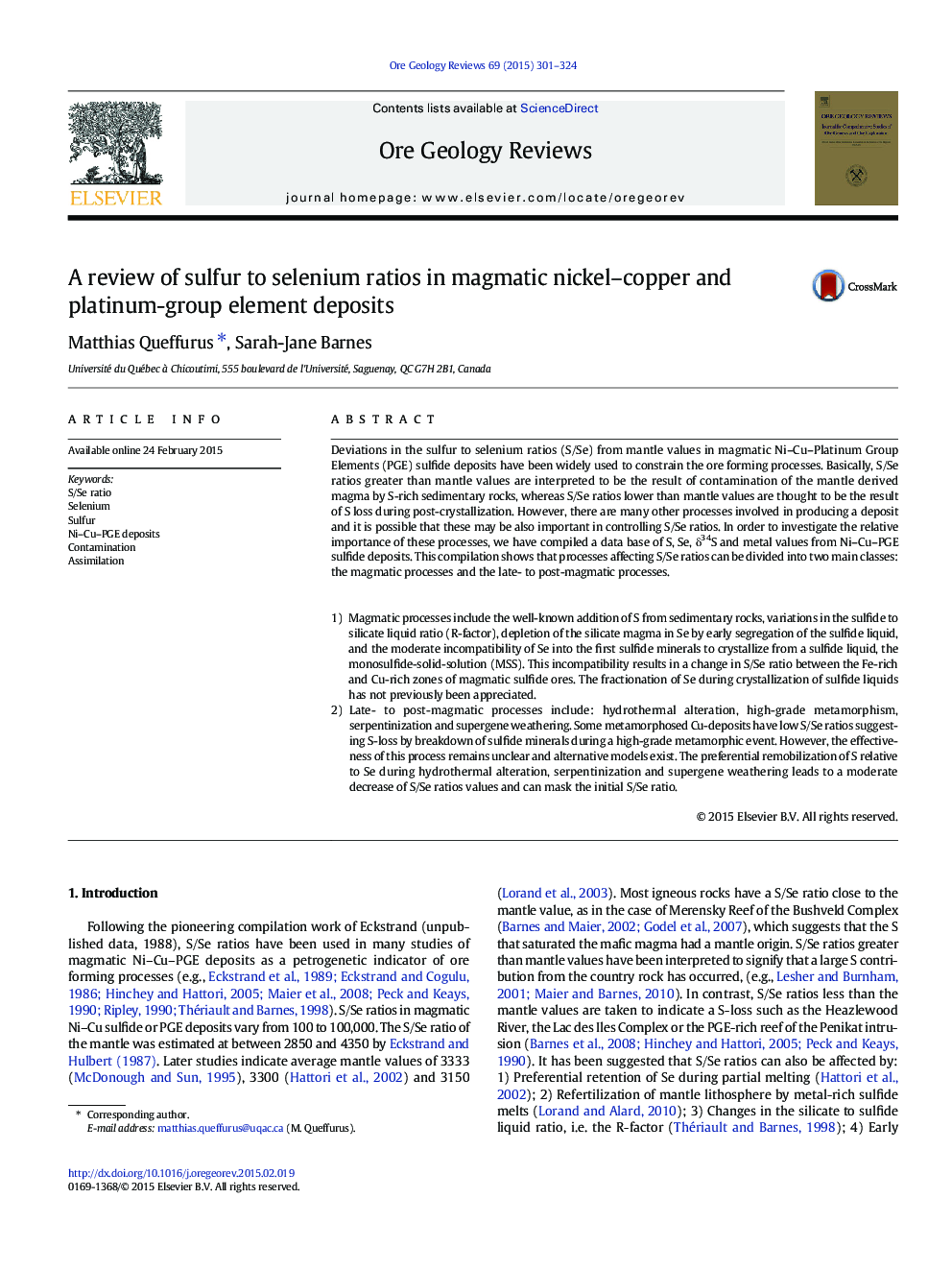| Article ID | Journal | Published Year | Pages | File Type |
|---|---|---|---|---|
| 4697322 | Ore Geology Reviews | 2015 | 24 Pages |
•Exhaustive compilation of S/Se ratios from numerous major Ni–Cu–PGE deposits.•Schematic plots of S/Se ratios allow to distinct different domains.•S/Se ratio is controlled by magmatic and late- to post-magmatic processes.•The S/Se ratio is the result of a complex evolution that can be modeled.•Some precautions should be considered in the use of S/Se ratios.
Deviations in the sulfur to selenium ratios (S/Se) from mantle values in magmatic Ni–Cu–Platinum Group Elements (PGE) sulfide deposits have been widely used to constrain the ore forming processes. Basically, S/Se ratios greater than mantle values are interpreted to be the result of contamination of the mantle derived magma by S-rich sedimentary rocks, whereas S/Se ratios lower than mantle values are thought to be the result of S loss during post-crystallization. However, there are many other processes involved in producing a deposit and it is possible that these may be also important in controlling S/Se ratios. In order to investigate the relative importance of these processes, we have compiled a data base of S, Se, δ34S and metal values from Ni–Cu–PGE sulfide deposits. This compilation shows that processes affecting S/Se ratios can be divided into two main classes: the magmatic processes and the late- to post-magmatic processes.1)Magmatic processes include the well-known addition of S from sedimentary rocks, variations in the sulfide to silicate liquid ratio (R-factor), depletion of the silicate magma in Se by early segregation of the sulfide liquid, and the moderate incompatibility of Se into the first sulfide minerals to crystallize from a sulfide liquid, the monosulfide-solid-solution (MSS). This incompatibility results in a change in S/Se ratio between the Fe-rich and Cu-rich zones of magmatic sulfide ores. The fractionation of Se during crystallization of sulfide liquids has not previously been appreciated.2)Late- to post-magmatic processes include: hydrothermal alteration, high-grade metamorphism, serpentinization and supergene weathering. Some metamorphosed Cu-deposits have low S/Se ratios suggesting S-loss by breakdown of sulfide minerals during a high-grade metamorphic event. However, the effectiveness of this process remains unclear and alternative models exist. The preferential remobilization of S relative to Se during hydrothermal alteration, serpentinization and supergene weathering leads to a moderate decrease of S/Se ratios values and can mask the initial S/Se ratio.
